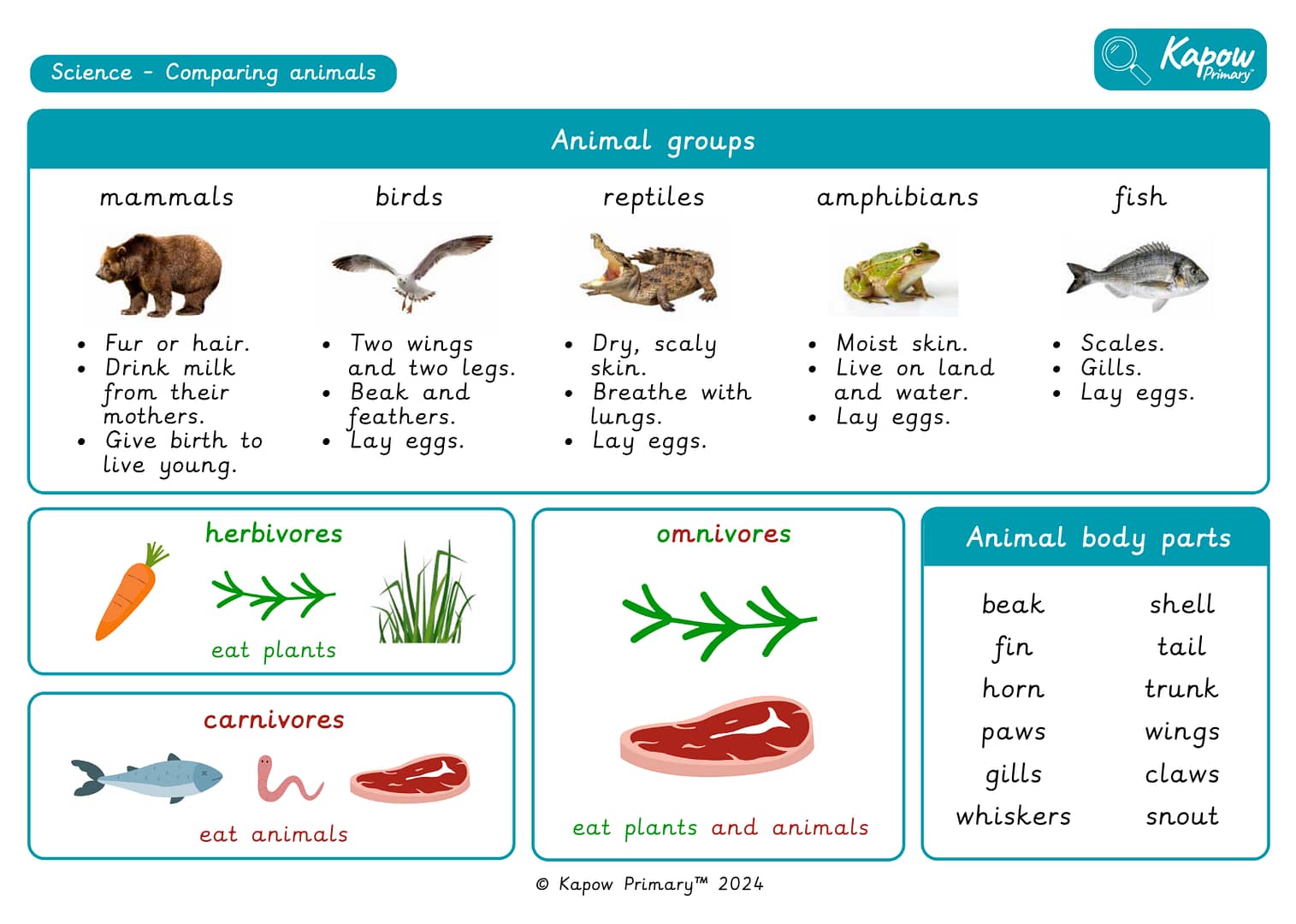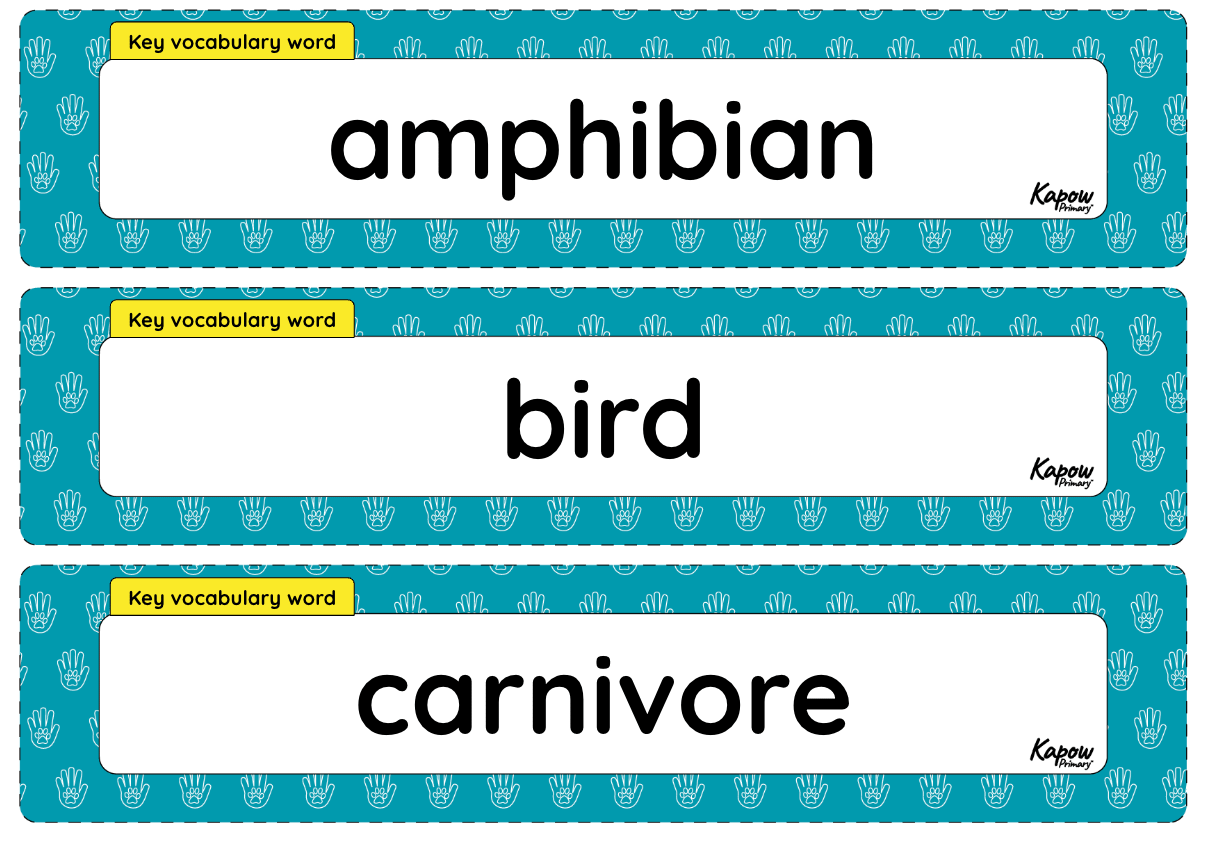Comparing animals
Comparing and grouping animals based on similarities and differences in their characteristics, physical features and diets.
The Curriculum and Assessment Review final report has been released. We’re reviewing the recommendations and planning for future updates. Learn more
- Subjects >
- Science >
- Key stage 1 >
- Year 1 >
-
Animals: Comparing animals
Unit outcomes
Pupils who are secure will be able to:
- Name and describe the physical features of a range of animals.
- Sort animals into groups based on their similarities and differences.
- Identify characteristics specific to mammals, birds, reptiles, amphibians and fish.
- Recall the diets of carnivores, herbivores and omnivores.
When working scientifically, pupils who are secure will be able to:
- Use a non-fiction text to find out about specific animals’ diets.
- Recognise that there are different ways to gather data.
- Record data in a block graph and use this to answer questions.
- Recognise what the scientist Jane Goodall was known for.
- Recall some of Jane Goodall’s key findings.
Please note that Kapow Primary Science lessons are designed to be 1 hour and 30 minutes long to reflect the requirements of a core subject.
Note: At the end of this unit, observe seasonal changes in spring. Allow the pupils to complete the Activity: Observing seasons over time (see Science, Year 1, Seasonal changes, Lesson 5: Observing over time).
Suggested prior learning
This is the first unit in the Kapow Primary scheme.Lessons
Lesson 1: Animal groups
- To identify and group animals.
Lesson 2: Describing animals
- To describe a variety of animals.
Lesson 3: Comparing animals
- To compare the features of animals.
Lesson 4: Carnivore, herbivore or omnivore?
Knowledge
- To identify animals that are carnivores, herbivores and omnivores.
Working scientifically
- To research using non-fiction texts.
Lesson 5: Pets
Knowledge
- To recognise animals that make suitable pets.
Working scientifically
- To gather and record data to help in answering questions.
Lesson 6: Jane Goodall
Knowledge
- To describe and compare the structure of animals.
Science in action
- To know about famous scientists throughout history.
Key skills
Related content
Unit resources

Knowledge organiser – Science Y1: Animals, including humans: Comparing animals
Aimed at pupils, a single page which gives key facts and definitions from the unit 'Comparing animals'.

Vocabulary display – Science Y1: Animals, including humans: Comparing animals
A display version of the vocabulary from the unit 'Comparing animals'.
Cross-curricular opportunities
English: writing – capital letters and full stops, pronoun ‘I’.
Maths: number – counting, block charts, more than, less than, most and least.
British values: mutual respect.

